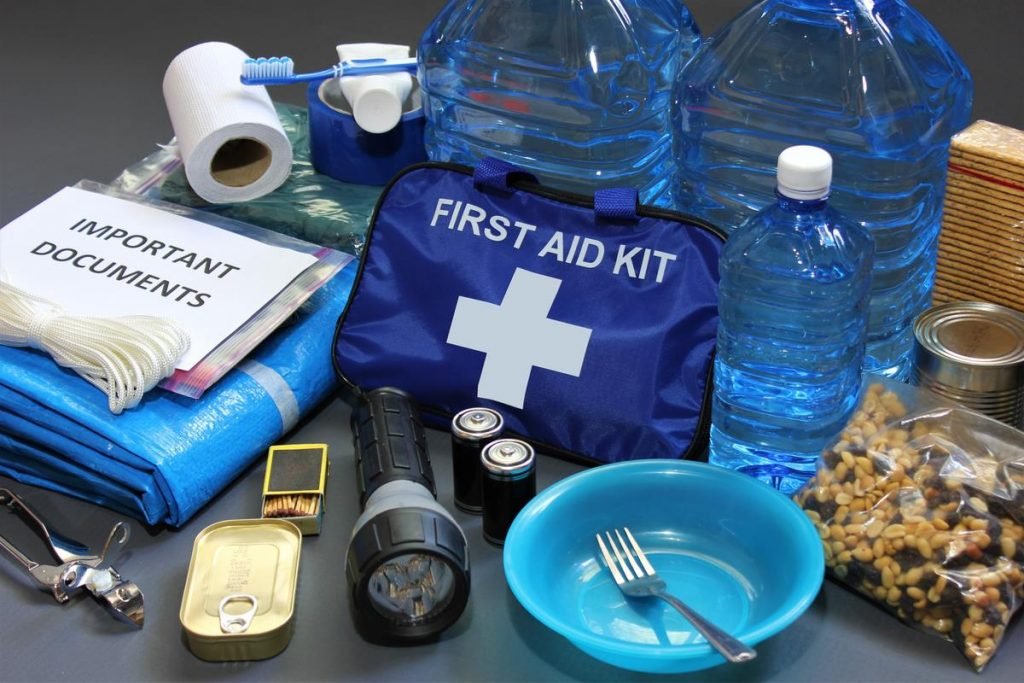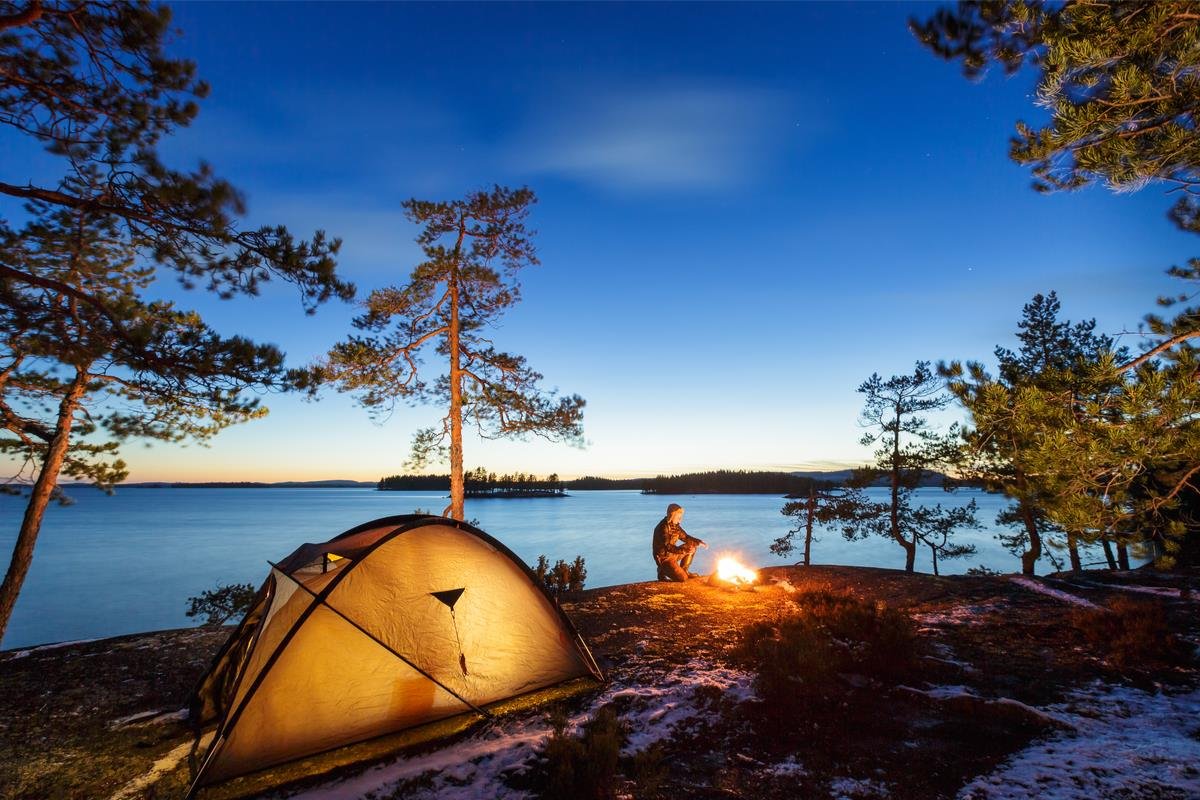Every spring and summer, looking to get away from the pressure and anxiety of everyday life, hundreds of thousands take to nature to go camping. Whether you have an R.V. or just a hammock, sleeping in the ‘woods’ can be a relaxing and rewarding time. But do you sometimes find all of your favorite places just a little crowded and overused? You might want to make a change and practice some Dispersed Camping adventures.
What Is Dispersed Camping? Dispersed camping is a term used primarily by the National Parks and Government websites. If you are not familiar with the term you may know it better as:
- Backcountry camping
- Wild camping
- Primitive Camping
- Boondocking
- Dry Camping
According to the USDA, Dispersed camping is the term used for camping anywhere in the National Forest OUTSIDE of a designated campground. You will have no facilities, no provided water and no garbage disposal. You are responsible for leaving your camping site in better condition than when you arrived.
Just think about it! Pick your own camping spot. Hang your hammock on the edge of a copse of trees overlooking a meadow filled with wildflowers where the whole of the Milky Way will be visible at night. Dispersed Camping is rough camping as far away from others as you wish to go.

So, What is Dispersed Camping?
Dispersed Camping means that you camp at a designated campground that is usually well away from civilization. This is not your staff-led, amenity-filled KOA campground, my friend. These are just areas on a map that are designated for use for campers.
Dispersed camping is vastly different from camping at an established, purpose build campsite like KOA or state or National Parks. All you get is somewhere to pitch your tent. This sort of camping is not for everyone. For a start, here’s some of the things your will never see at a dispersed campground:
- Restrooms
- Grocery stores
- Electricity
- Trash cans
- Toilets
- Showers
- Running water
Dispersed camping is probably not a great idea for your first camping trip. If you haven’t been in a tent for a few years, you should consider dipping your toe in the water at a more established campground first.
Your camping comfort is determined by what you bring with you. Your toilet may be just a ‘cat hole’ – a hole dug into the ground to bury your human waste. And your grocery store is the box full of food you brought. Remember the motto of all rough campers: “If you pack it in, pack it out again. Leave nothing but footprints.”
But whatever term you are familiar with, it just means roughing it like the Pioneers of the Old West.
How to Choose a Dispersed Camping Site?
The best way to find out what areas are open to dispersed camping is to contact the nearest Forest Service office to the area you wish to visit. Typically, dispersed camping is NOT allowed in the vicinity of developed recreation areas such as campgrounds, picnic areas, or trailheads.
https://www.fs.usda.gov/detailfull/fishlake/recreation/?cid=stelprdb5121831
Setting up at a dispersed camp site can be more challenging than using a purpose build site. Some tips that might help:
- Plan where you intend to camp. Use Recreation.gov to identify good locations.
- Plan to arrive at your campsite no later than mid-afternoon. You want plenty of light available
- Remember, you need to be self sufficient. One area that is often forgotten is the need for plentiful fresh drinking water. You are probably going to have 5-gallons or so with you – that will soon go. Read our comprehensive guide on ‘How to Get Fresh Drinking Water While Family Camping‘.
- Food is also incredibly important. We have provided some suggestions for food to take camping.
- Cooking is important. Just because you are off-grid, there is no need to sacrifice some brilliant camping food. You can cook over a campfire. It does take a bit of experience and you need to build the campfire correctly. For us, using a camping stove is still the best way to cook while camping.
- If you are camping in an area with bears, you are responsible for your own safety. You will need bear proof containers, coolers, and potentially suspended bear boxes. Bear spray is essential. Do not fall for any online cons telling you you can use wasp spray or self-defense pepper spray instead.

When you are dispersed camping the mantra is, “Leave it cleaner that you find it”. The simple rule is Leave No Trace. This rule keeps you accountable for your part in preserving the environment. Take care of the waste that you make and respect the animals around you.
For instance, according to Int.org, when trying to get rid of your human waste, be sure to dig a cat hole that is 6 to 8 inches deep and 200 feet away from your water sources. This is just one dispersed camping tip – but, of course, it’s an important one. Get an idea of other guidelines and rules on the USDA Forest Service website.
What Is Free Dispersed Camping?
Most dispersed camping is free. There are some, none federal, locations where a fee is charged. Usually this goes to maintaining access and, sadly, cleaning up after anti-social campers.
Most federally funded lands are free and open to the public:
- Bureau of Land Management (BLM): This agency is a part of the U.S. Department of the Interior. This agency focuses more on the recreational areas of that land.
- Wildlife Management Area (WMA): Land that is protected for preserving the wildlife that lives there
- National forest: The USDA Forest Service helps with maintaining these lands.
- National grassland: They are similar to a national forest and resemble more of a prairie.
- State forests: Different types of landscapes that are used for public recreation.
Most of the roads in these federally funded public lands are remote and are often just tracks wide enough for vehicles. There are few visitors to justify regularly serviced roads. This allows you to go off the beaten path and save your money for nights of peace.
The western side of the United States has more space available for dispersed camping.
To find a comprehensive list of dispersed camping sites in the U.S. forests, check out the U.S Forest Service Website and search “dispersed camping.” You’ll find a whole list of maps for areas throughout the country. You can find details about each site by clicking locations on the map.
What Is Primitive Camping?
Primitive camping gives you the freedom to bypass reservation campsites that are completely remote. You do not need to have a tent, and it challenges you to only pack the bare minimum of what you need to survive.
Going to a campsite that has many visitors will cause more noise or fewer spaces for you to choose from. With this type of camping, you must be on your toes in knowing what to pack and the skills you should learn.
- Food supplies: Be sure to bring enough water to last you for all your needs. Bring knives if you plan to go fishing or hunting. Cookware may be needed for certain foods that you want to cook.
- Backcountry permit: Certain national parks may require you to have a backcountry permit. We think this is intended to limit vagrancy.
- First aid kit: Anything can happen when you are camping, and this is a great preventative step.
- Necessities: Gather the maps and flashlights you will need to help you along the way. Use a checklist to reign in all the things you need for your camping trip.
If you want to be completely out in the elements with only what you can carry, there is another form of primitive camping.
What Is Primitive Tent Camping?
With primitive tent camping, you are able to use any kind of tent that you wish to use. Choose your tents wisely if the campground you visit does not allow vehicles.
There are federally funded lands that will allow you to bring a vehicle with you. This kind of camping should be done with a 4×4 vehicle. Off-road capabilities will help you navigate the more remote roads better when you go to the campsite of your choosing.
With the help of your vehicle, you will be able to load more supplies to aid you in camping. This option may be a little tougher if you choose to go wild camping.
What Is Wild Camping?
This is the kind of camping that is based more on the beauty of your surrounding area. You are mostly hiking for the majority of the day, and then you set up your new campsite. This allows you to sleep in a different area of the land for as long as you are staying there.
Pack lightly when you do wild camping. Your vehicle will be further away and exploring new parts of the land will leave you exhausted if you are carrying too much.
Days before taking your camping trip, pack your foods in containers that do not give off their smell. This will protect you and your food stash from any wildlife that may be curious.
Research the best places to wild camp. You don’t want to trespass.
Ready to Find a Dispersed Camping Site? More Resources.
Dispersed camping sites can be found in most federally funded areas. Knowing that it is federally funded will let you know that you can pocket your cash and enjoy nature for free.
There are several sites and resources that will help you find dispersed campsites near you.
- Campendium: This shows you most of the free camping sites in North America.
- iOverlander: Lets you type in the city or GPS coordinates where you wish to camp. It gives you a key that shows an established campground, water stations and places to wild camp.
- Motor Vehicle Use Map: This will help to show you the roads that are managed by the US Forest Service.
- National Forests: This map is given by the U.S. Forest Service and will let you pick what activities you wish to complete and shows you the best campsite to do it in.
- The Dyrt: You can find a tent, R.V., and unique lodgings site on this website.
- VANLIFE: An app that finds free campsites on the go and finding communities that are close to you. It also protects your location if you wish not to be found.








4 Responses